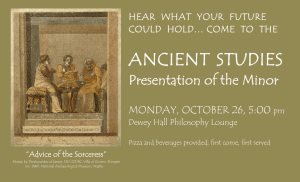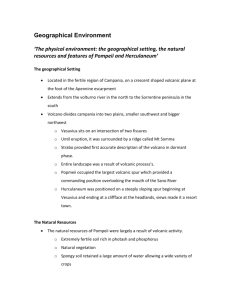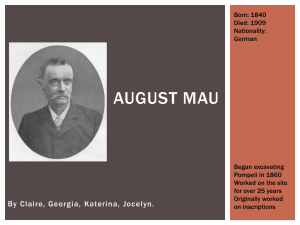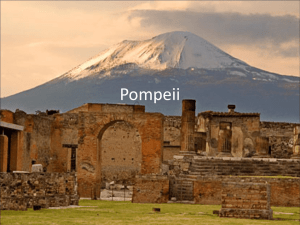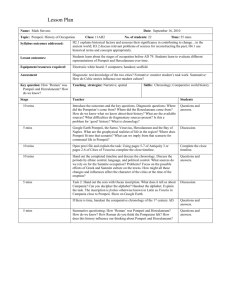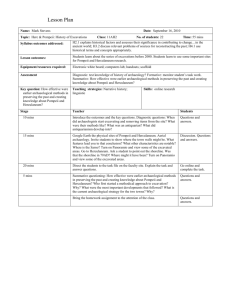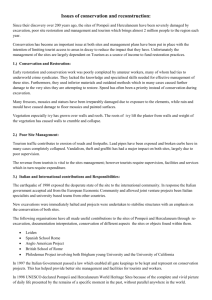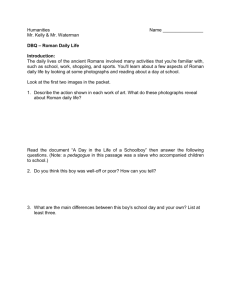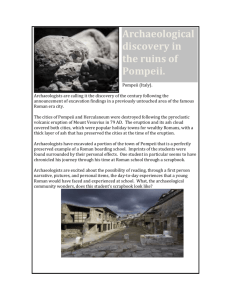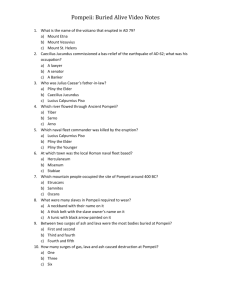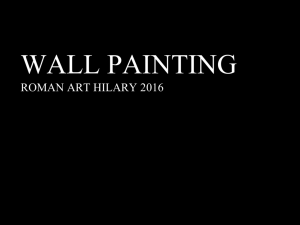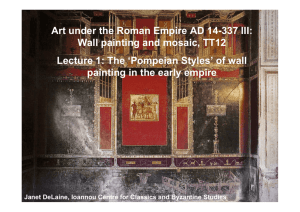DOC
advertisement
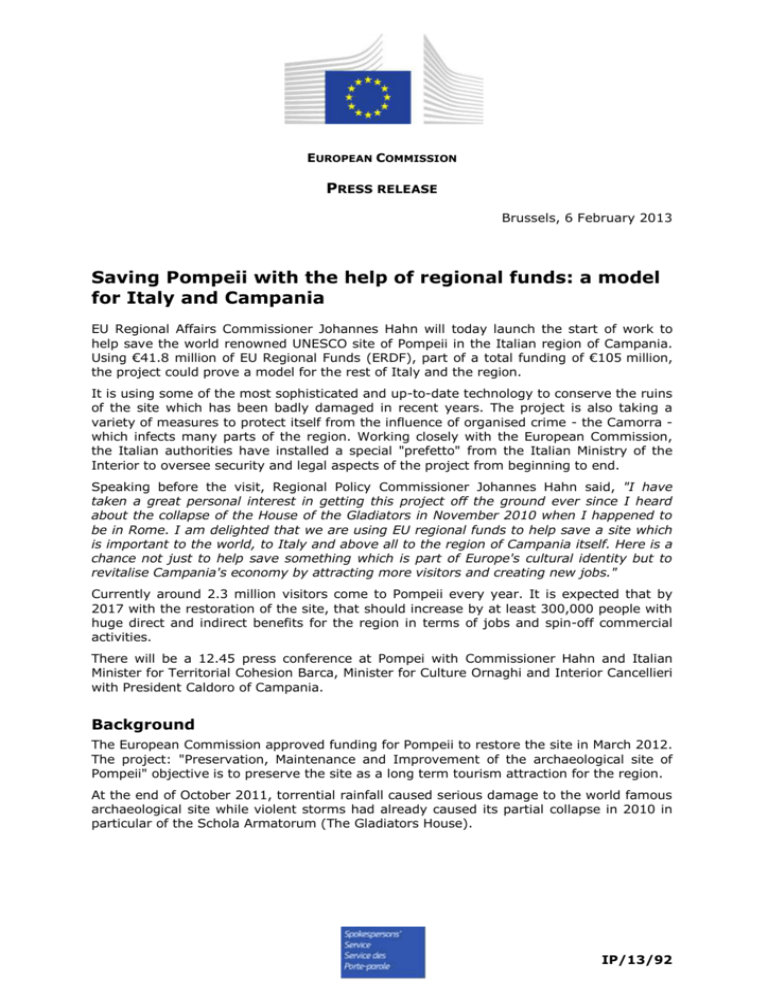
EUROPEAN COMMISSION PRESS RELEASE Brussels, 6 February 2013 Saving Pompeii with the help of regional funds: a model for Italy and Campania EU Regional Affairs Commissioner Johannes Hahn will today launch the start of work to help save the world renowned UNESCO site of Pompeii in the Italian region of Campania. Using €41.8 million of EU Regional Funds (ERDF), part of a total funding of €105 million, the project could prove a model for the rest of Italy and the region. It is using some of the most sophisticated and up-to-date technology to conserve the ruins of the site which has been badly damaged in recent years. The project is also taking a variety of measures to protect itself from the influence of organised crime - the Camorra which infects many parts of the region. Working closely with the European Commission, the Italian authorities have installed a special "prefetto" from the Italian Ministry of the Interior to oversee security and legal aspects of the project from beginning to end. Speaking before the visit, Regional Policy Commissioner Johannes Hahn said, "I have taken a great personal interest in getting this project off the ground ever since I heard about the collapse of the House of the Gladiators in November 2010 when I happened to be in Rome. I am delighted that we are using EU regional funds to help save a site which is important to the world, to Italy and above all to the region of Campania itself. Here is a chance not just to help save something which is part of Europe's cultural identity but to revitalise Campania's economy by attracting more visitors and creating new jobs." Currently around 2.3 million visitors come to Pompeii every year. It is expected that by 2017 with the restoration of the site, that should increase by at least 300,000 people with huge direct and indirect benefits for the region in terms of jobs and spin-off commercial activities. There will be a 12.45 press conference at Pompei with Commissioner Hahn and Italian Minister for Territorial Cohesion Barca, Minister for Culture Ornaghi and Interior Cancellieri with President Caldoro of Campania. Background The European Commission approved funding for Pompeii to restore the site in March 2012. The project: "Preservation, Maintenance and Improvement of the archaeological site of Pompeii" objective is to preserve the site as a long term tourism attraction for the region. At the end of October 2011, torrential rainfall caused serious damage to the world famous archaeological site while violent storms had already caused its partial collapse in 2010 in particular of the Schola Armatorum (The Gladiators House). IP/13/92 Pompeii – a Roman town near Naples was buried in thick ash when Mount Vesuvius erupted in 79AD. In 1748 the site was rediscovered and underneath the layer of ash and debris, Pompeii was mostly preserved. In 1956 the individual sites in Pompei open to the public were 64 – today no more than 5 are open at any one time because of damage. The investment comes through a programme called "Attrattori culturali, naturali e turismo" designed to support cultural, natural and tourist attractions in Campania, Puglia, Calabria and Sicily from 2007-2013. The programme has been amended to redirect investment towards this project. In 2000-2006, the European regional policy already supported 22 restoration projects on the Pompeii site worth €7.7 million from ERDF (50% of their total cost). The Pompeii project will undertake: to consolidate the structures of the archaeological site, starting with the areas ranked "high risk" pursuant to the 'Archaeological Risk Map'; to build a water canalisation and drainage system In the non-excavated state property area leaning over the ancient buildings; to implement the consolidation, restoration and enhancement works in line with the method of programmed preservation; to improve the training of staff, working on site for the 'Special Superintendency for the Archaeological Heritage of Naples and Pompeii' (SANP). MEMO/13/68 Following links will be available later this afternoon: EbS Photo reportage Contacts : Shirin Wheeler (+32 2 296 65 65) Annemarie Huber (+32 2 299 33 10) 2
